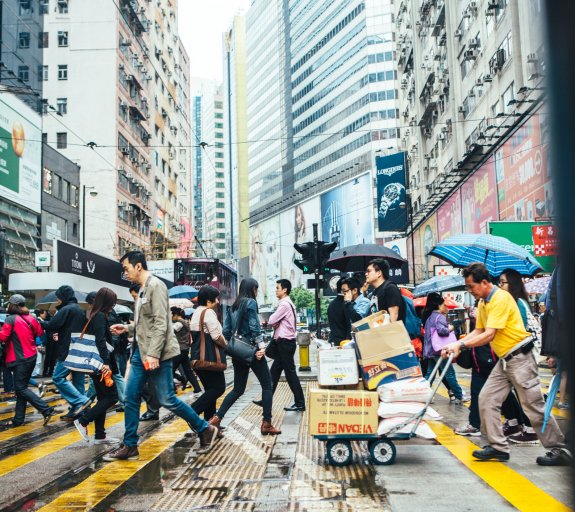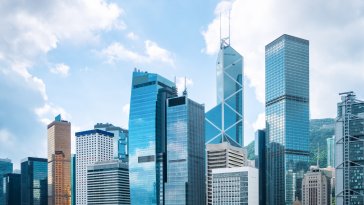
China reaction: momentum accelerated boosted by investment
- 16 Abril 2024 (3 min de lectura)
Much-needed solid GDP growth
China’s economy expanded by 5.3% yoy in Q1 2024, beating the market expectation by a large margin (BBG: 4.4%). The momentum in the economy accelerated from Q4 2023, which grew by 5.2%. In quarterly terms it rose by 1.6%. By industry, the secondary industry saw the fastest growth in value added in Q1, growing by 6.0% yoy, up from 5.5% in Q4 2023. While value added from the tertiary sector slowed to 5.0% in Q1 from 5.3% in Q4 last year.
The better-than-expected momentum in China’s economy is likely to change the market’s view which has been gloomy for several months. It also puts the economy in a better position to achieve the government growth target for the year of 5%. By value added, the secondary industry contributed the most, likely reflecting the higher investment and output from the manufacturing sector. However, the deceleration in the output from the tertiary sector highlighted ongoing weaker consumption in the economy.
Investment in the driver’s seat
Fixed asset investment (FAI) grew by 4.5% yoy in Q1, an increase of 4.8% in March, up from 4.2% in February. Investment in the manufacturing sector remained strong and grew by 9.9% in the first three months, equivalent to a rise of 10.3% in March, up from 9.4% in February. Investment in auto manufacturing was relatively modest at 7.4% yoy in the first quarter of the year. Infrastructure continued to be the hot destination for investment. In Q1, it grew by 9.9% yoy, implying an increase of 6.6% in March. By source of investment, public investment was up by 7.8% yoy in Q1 – echoing the strong boost to infrastructure - while private investment remained sluggish, up a mere 0.5% yoy. Although FAI from foreign funded enterprises improved, it was still 10.4% below the level in the first quarter of last year, improved from a decline of 14.1% seen at the end of February.
As Beijing’s fiscal stimulus package explained during the National People’s Congress in early March, the focus for the year will be to move up the value chain in the manufacturing sector and boost infrastructure projects. Indeed, the investment destination and funding source confirmed good implementation of such policy measures. However, private sector and foreign investor sentiment remain subdued. We expect public investment to continue leading among other investors this year, which should spillover into the broader economy.
Less exciting readings from retail
In March, retail sales grew by 3.1% yoy, slowed from a rise of 5.5% in February. Both sales in consumer goods and catering cooled somewhat – growing by 2.7% and 6.9%, respectively from 4.6% and 12.5% in February. Sales in services increased by 10% in Q1, down from the 12.3%. Household appliance sales stayed strong, growing by 5.8% in March, up from 5.7% in February. However, auto sales reversed to a decline of 3.7% in March, from a solid increase of 8.7% in February.
Annual figures this year were partly affected by base effects, with higher levels last year following the initial boost of consumption appetite following the lifting of lockdown measures. Nevertheless, early signs of a reduced propensity to save started to emerge with a decrease in M1 to M2 ratio in March. Moreover, consumption of big-ticket goods seemed to follow the direction of the policy measures – the rise in household appliances came after Beijing’s initiative of the home appliances trade-in and upgrade. Auto sales, which had a strong performance in the past two years benefitting from the trend of decarbonisation, now started running out of steam.
Good news from Q1 may lower the future expectation for policy support
The solid GDP growth in Q1 has eased gloomy sentiments in the market somewhat. However, it could also ease the pressure that government officials face and therefore slow policy momentum in the near term. Given the persistent drag from the property sector downturn and the dent in consumer confidence in the past years, this year’s growth needs to be backed by the supportive measures from Beijing. The better-than-expected reading in Q1 indeed is much needed for the country, but was mainly a reflection of supportive policies. While a good reading may curb the strength of future policy support and risk losing the good momentum that just gained.
On the back of the stronger Q1 GDP figure, we revised up our GDP forecast for the year to 5.0%, seeing the economy on track to achieving this year’s growth target. On the policy front, we expect the authorities stay supportive and continue maintaining an effective implementation of announced policy measures. In addition, we see a reduced possibility of policy rate cuts but maintain the likelihood of a 50bps cut in RRR for this year.
Disclaimer
Este documento tiene fines informativos y su contenido no constituye asesoramiento financiero sobre instrumentos financieros de conformidad con la MiFID (Directiva 2014/65 / UE), recomendación, oferta o solicitud para comprar o vender instrumentos financieros o participación en estrategias comerciales por AXA Investment Managers Paris, S.A. o sus filiales.
Las opiniones, estimaciones y previsiones aquí incluidas son el resultado de análisis subjetivos y pueden ser modificados sin previo aviso. No hay garantía de que los pronósticos se materialicen.
La información sobre terceros se proporciona únicamente con fines informativos. Los datos, análisis, previsiones y demás información contenida en este documento se proporcionan sobre la base de la información que conocemos en el momento de su elaboración. Aunque se han tomado todas las precauciones posibles, no se ofrece ninguna garantía (ni AXA Investment Managers Paris, S.A. asume ninguna responsabilidad) en cuanto a la precisión, la fiabilidad presente y futura o la integridad de la información contenida en este documento. La decisión de confiar en la información presentada aquí queda a discreción del destinatario. Antes de invertir, es una buena práctica ponerse en contacto con su asesor de confianza para identificar las soluciones más adecuadas a sus necesidades de inversión. La inversión en cualquier fondo gestionado o distribuido por AXA Investment Managers Paris, S.A. o sus empresas filiales se acepta únicamente si proviene de inversores que cumplan con los requisitos de conformidad con el folleto y documentación legal relacionada.
Usted asume el riesgo de la utilización de la información incluida en este documento. La información incluida en este documento se pone a disposición exclusiva del destinatario para su uso interno, quedando terminantemente prohibida cualquier distribución o reproducción, parcial o completa por cualquier medio de este material sin el consentimiento previo por escrito de AXA Investment Managers Paris, S.A.
La información aquí contenida está dirigida únicamente a clientes profesionales tal como se establece en los artículos 194 y 196 de la Ley 6/2023, de 17 de marzo, de los Mercados de Valores y de los Servicios de Inversión.
Queda prohibida cualquier reproducción, total o parcial, de la información contenida en este documento.
Por AXA Investment Managers Paris, S.A., sociedad de derecho francés con domicilio social en Tour Majunga, 6 place de la Pyramide, 92800 Puteaux, inscrita en el Registro Mercantil de Nanterre con el número 393 051 826. En otras jurisdicciones, el documento es publicado por sociedades filiales y/o sucursales de AXA Investment Managers Paris, S.A. en sus respectivos países.
Este documento ha sido distribuido por AXA Investment Managers Paris, S.A., Sucursal en España, inscrita en el registro de sucursales de sociedades gestoras del EEE de la CNMV con el número 38 y con domicilio en Paseo de la Castellana 93, Planta 6 - 28046 Madrid (Madrid).
Advertencia sobre riesgos
El valor de las inversiones y las rentas derivadas de ellas pueden disminuir o aumentar y es posible que los inversores no recuperen la cantidad invertida originalmente.



